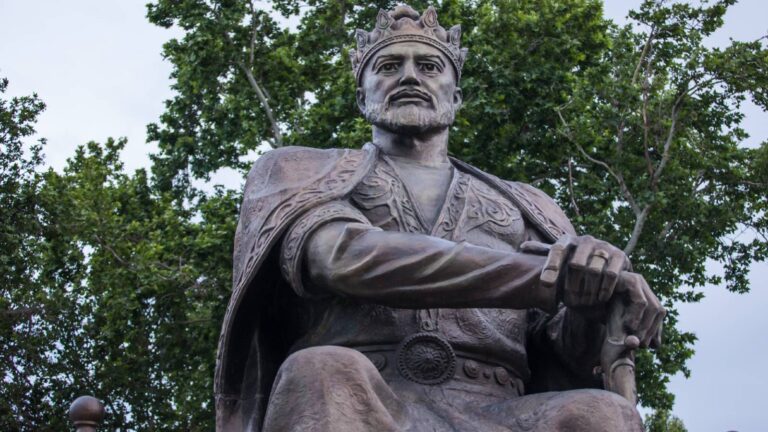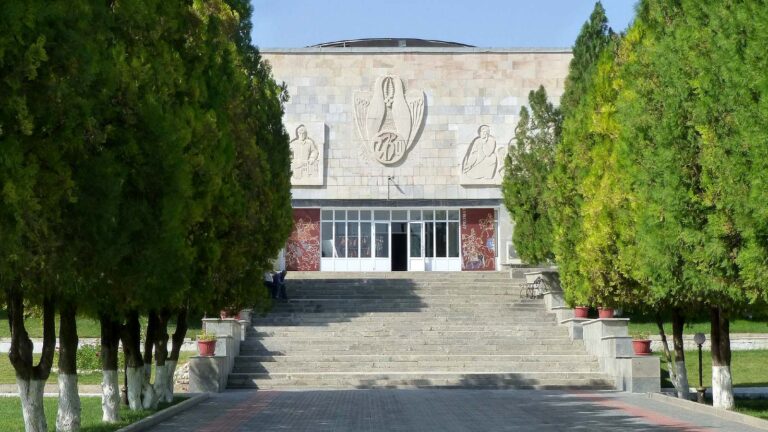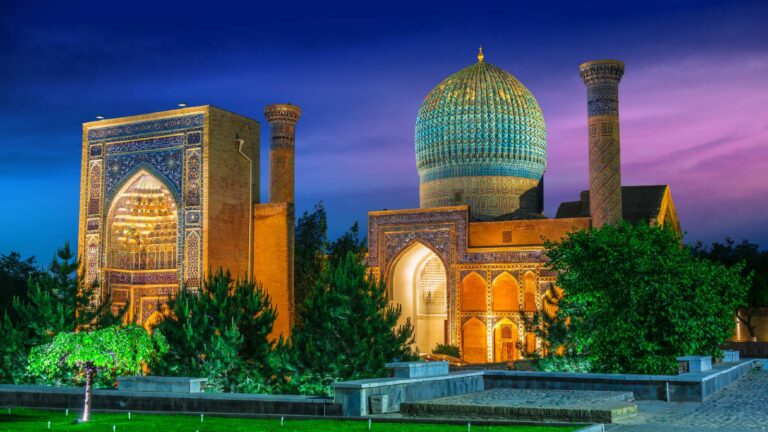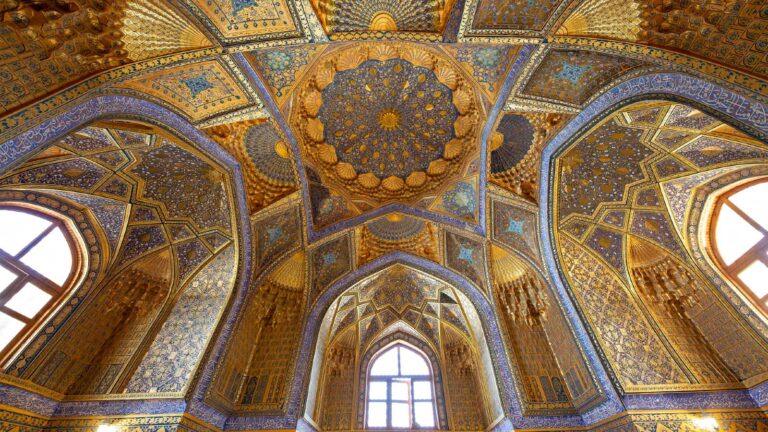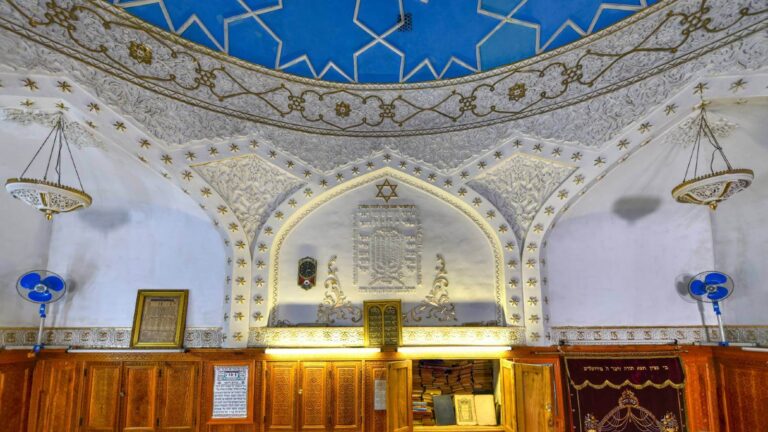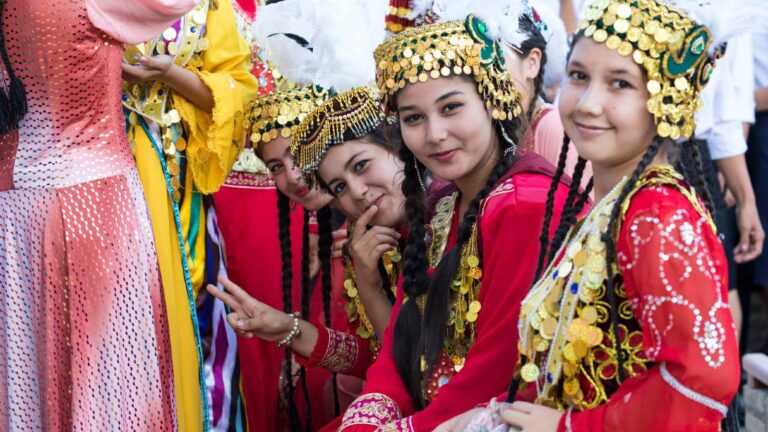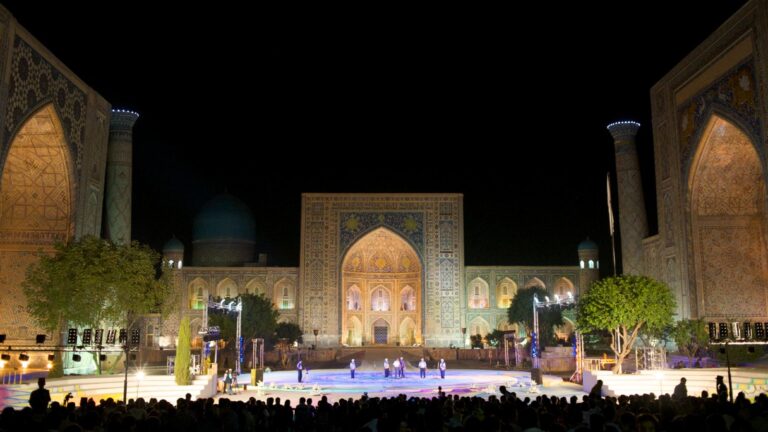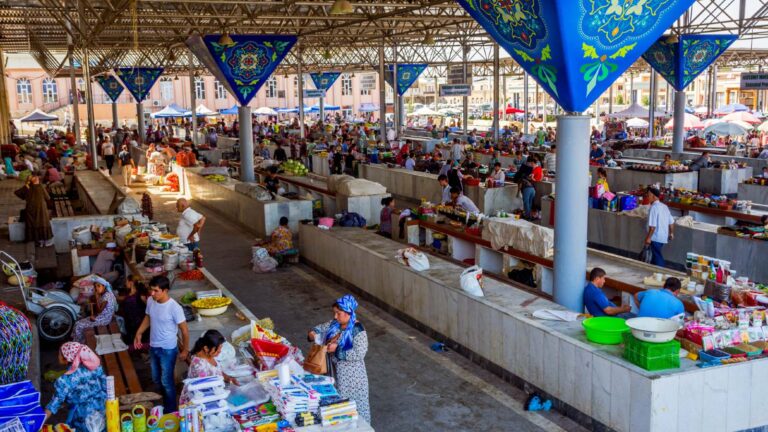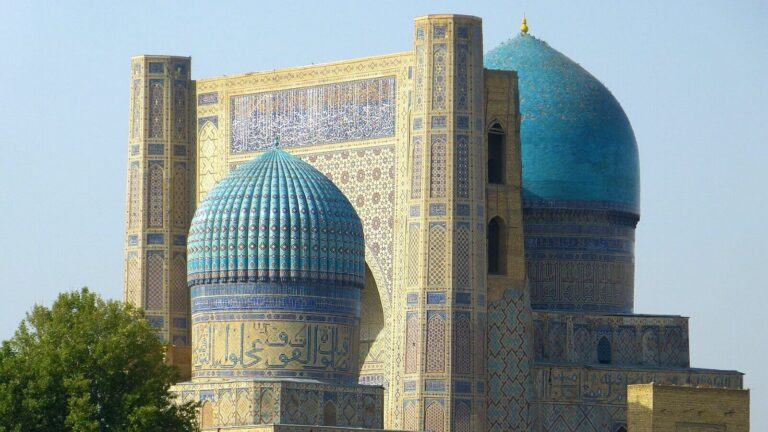Getting There
Looking for a stop or station near the Tomb? Check the list of the nearest stops to your destination: Registon Ko’chasi; Chashma; Bustonaroy; Afrosiob.
Do you want to check if there is no other way that will help you get there faster? An electronic map of the city helps you find alternative routes and times. Get instructions on how to easily get to or from Tomb of Daniyar using various programs.
What to Expect
Before the construction of the mausoleum the tomb of Daniel was covered by the river rock and there were sacred poles at its head. A beautiful six-dome kubba (qubba) was erected over the burial in 1900. It was the same colour as the pistachio tree growing beside it. Many tie pieces of fabric to the branches of the tree making wishes and people say they come true. Today there are five of the six domes.
Another miracle is a spring at the foot of the mausoleum. Its pure glacial water is not only tasty and healthy but it has a wonderful characteristic to heal not only the body but the soul too. Everyone who comes to the mausoleum must drink some water from this spring and make an ablution.
Many stories are also connected with the length of the tomb. The mosque servants reconstructed the tomb more than once asserting that the saint’s bones grow during especially successful years. So today the length of the tomb is 18 metres. People say that the hand of Daniel will grow until it encircles the entire planet and then a paradise will come on earth. According to another legend Tamerlane decided to build the tomb of such a length that enemies and grasping couldn’t find the relics.
History
Daniel, which is translated from Jewish as ‘Judge is God’ or ‘My Judge is God’, was born in the Holy Land of Jerusalem in 603 B. C. He was the descendant of David and Solomon. In 586 B.C. Israel was conquered by Nebuchadnezzar. After successful finishing school Daniel was employed to the tsar’s court as a court dignitary. Daniel has a special gift: he could explain dreams very exactly including Nebuchadnezzar’s ones. Thanks to this gift the tsar appointed him one of the closest advisers.
Having got the revelations about the future of the world’s peoples from above Daniel wrote a prophetic book in Jewish and Judaic Aramaic which consisted of 14 chapters. In his old age Daniel moved to Susa city, where he finished his mundane path and was buried in the tomb of kings. There is a popular belief that Daniel’s spirit protects against all troubles and brings prosperity.
How did the relics of the saint get to Samarkand? According to legend this mausoleum emerged just because Amir Timur wanted Samarkand and its residents to get protection and welfare thanks to the patronage of the spirit of Daniel. During his regular march to Asia Minor Tamerlane couldn’t conquer Susa. Theologians told him that the city was protected by the prophet Daniel’s holy relics. Tamerlane signed an agreement he would leave the town if he was allowed to take the saint’s right hand. According to legend the horse carrying the relics stopped dead. And when it hoofed there was a miracle: a healing spring gushed out from under the ground. Then it was decided to bury Daniel’s relics right here, next to the Siab river.
Another legend says that it’s not the saint’s relics but the ashes from the tomb of Daniel are buried in Samarkand. As generally known according to canons of Islam burial of the dead must be immediate and it is not allowed to disturb the remains. Being Muslim Tamerlane couldn’t afford to take part of the remains even for such noble purpose as prosperity of the capital of his empire. So Timur took the land from the tomb of the saint and having mixed it with Samarkand ground, made a grave on that later erected a mausoleum.
Facilities Available
Muslim amulets are sold around the mausoleum. People buy these amulets and ask the prayer inside the mausoleum to ‘read on the amulet’ for all goods. You should enter the mausoleum without shoes – everything inside is covered with carpets and kurpachas (national blankets). You should walk round the grave covered with green velvet with gold embroidery on the edges in silence three times. After that everybody sits down and prays.
Until recently, apart from Samarkand there were four more mausoleums of the prophet Daniel: in Mosul (Iraq), Jerusalem (Israel), Susa (Israel) and Istanbul (Turkey). However, not so long ago the tomb of the saint in Iraq was destroyed by fighters. The reason of this vandalism is still inexplicable. But the rest of the mausoleums of the prophet are guarded more now.

